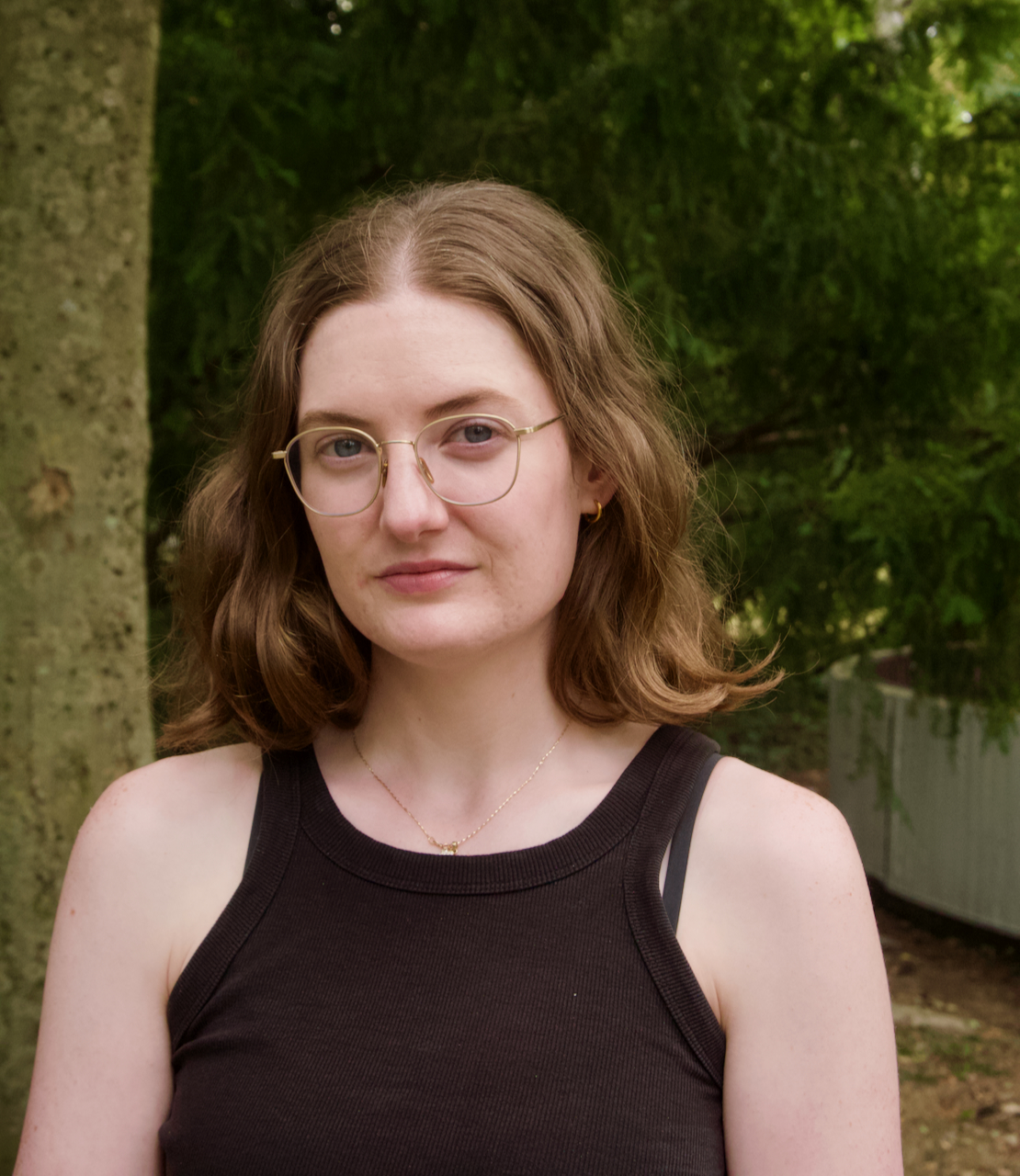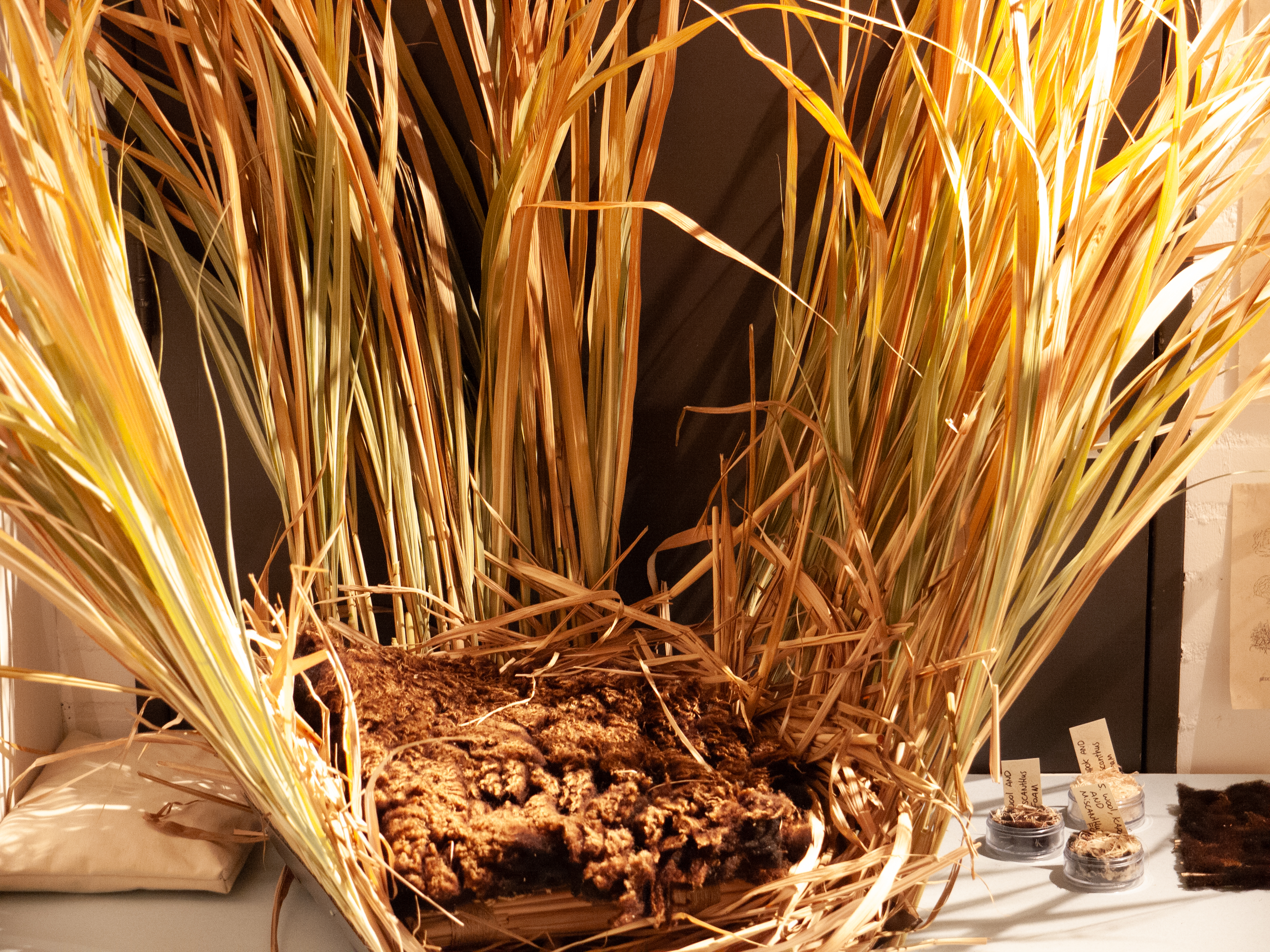Sirah Haris (23) doesn’t easily fit into a box and he likes it that way. Describing himself as an entertainer, visual artist, and philosopher, his practice moves freely between essays, memes, zines, sculptures, livestreams, and trippy collages.
“I’m the online oracle who likes orcas,” he says with a grin. “But also: I want to make people think.”
Originally from Luxembourg, Haris has spent the last four years navigating the openness of WdKA with curiosity and intensity. His work may begin with illustration, but it rarely ends there.
Magic, Memes, and the Digital-Physical Divide
Haris’s graduation project revolves around a multi-layered installation exploring the tension and potential harmony between the digital, natural, and spiritual worlds. At its core, it asks how hyperconnected technologies are reshaping our perception of reality, magic, and human presence.
“We overvalue the digital and undervalue the natural,” he says. “I want to bring back the magic. The spiritual. The feeling that there’s something unseen and powerful in the way we interact with technology.”
The work draws inspiration from early internet culture, video games, speculative fiction, AI ethics, and Duchamp’s conceptual provocations. A potential final piece might include a large wooden artwork paired with a livestream - Haris on screen, in real-time, inviting viewers to engage with him as both person and persona.
“Livestreaming is weird. You’re accessing me, but I’m not really there. And that’s art,” he adds “It’s about showing how powerful this connection is and how invisible the infrastructure behind it has become.”
Essays, Zines, and Substack
Haris’s process is just as layered as his concepts. Weekly YouTube videos, regular Substack essays, and collaborative zine fairs in Amsterdam and New York are all part of his practice. One week might involve writing about cat memes as cultural symbols; the next, crafting manifestos about AI and digital spirituality.
“I use the internet as my sketchbook,” he says. “But I also love physicality: zines, collages, sculpture. It’s all one big sandbox.”
During his third year, Haris participated in the Ex Machina honors program, which helped shape his approach. “It was all about automatic writing and doing. That unlocked something in me,” he recalls. “Now I work like that all the time. Observe, make, write, share. Repeat.”
Confidence, Chaos, and Community
Graduating feels surreal, but Haris is embracing the moment and uncertainty.
“I don’t have a safety net,” he admits. “Sometimes it’s scary, especially financially. But I trust this road I’m on. It’s mine.”
He’s currently organizing a zine fair and preparing for an immersive exhibition that will combine his digital and physical work. And yes, there may be a livestream. Or two. “One of my strengths is that I show myself. I put myself out there. That’s how I’ve grown, by taking every opportunity.”
WdKA as a Sandbox
Haris credits the freedom of WdKA for allowing his practice to evolve organically.
“The openness of the stations, the people, the city—it’s been the perfect place for me to explore,” he says. “And being five hours away from home was perfect. Enough distance to grow, but close enough to run back when I needed to.”
He's especially grateful for the academy's space to experiment beyond labels. “I don’t see myself as just an illustrator. And here, I didn’t have to.”
What Comes Next?
After graduation, Haris is planning a move to Amsterdam, where he hopes to tap into the city’s digital culture scene. A master’s degree, possibly in digital culture, is on his radar. Teaching is also a possibility, especially back in Luxembourg. But for now, he’s focused on appreciating the transition. “This phase is intense, but I try to enjoy it. There’s a kind of beauty in not knowing exactly what comes next.”
Advice for Future Students
Asked what advice he’d give to incoming students, Haris leans into his ethos: “Try everything. Be random. Be weird. Use your instincts. Trust the timing. Not every project has to be your magnum opus. Let yourself play.”


